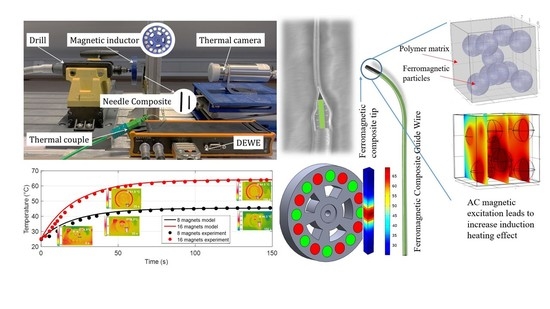Enhancing the Low-Frequency Induction Heating Effect of Magnetic Composites for Medical Applications
Abstract
Share and Cite
Xiang, Z.; Jakkpat, K.-I.; Ducharne, B.; Capsal, J.-F.; Mogniotte, J.-F.; Lermusiaux, P.; Cottinet, P.-J.; Della Schiava, N.; Le, M.Q. Enhancing the Low-Frequency Induction Heating Effect of Magnetic Composites for Medical Applications. Polymers 2020, 12, 386. https://doi.org/10.3390/polym12020386
Xiang Z, Jakkpat K-I, Ducharne B, Capsal J-F, Mogniotte J-F, Lermusiaux P, Cottinet P-J, Della Schiava N, Le MQ. Enhancing the Low-Frequency Induction Heating Effect of Magnetic Composites for Medical Applications. Polymers. 2020; 12(2):386. https://doi.org/10.3390/polym12020386
Chicago/Turabian StyleXiang, Ziyin, Khao-Iam Jakkpat, Benjamin Ducharne, Jean-Fabien Capsal, Jean-François Mogniotte, Patrick Lermusiaux, Pierre-Jean Cottinet, Nellie Della Schiava, and Minh Quyen Le. 2020. "Enhancing the Low-Frequency Induction Heating Effect of Magnetic Composites for Medical Applications" Polymers 12, no. 2: 386. https://doi.org/10.3390/polym12020386
APA StyleXiang, Z., Jakkpat, K.-I., Ducharne, B., Capsal, J.-F., Mogniotte, J.-F., Lermusiaux, P., Cottinet, P.-J., Della Schiava, N., & Le, M. Q. (2020). Enhancing the Low-Frequency Induction Heating Effect of Magnetic Composites for Medical Applications. Polymers, 12(2), 386. https://doi.org/10.3390/polym12020386






